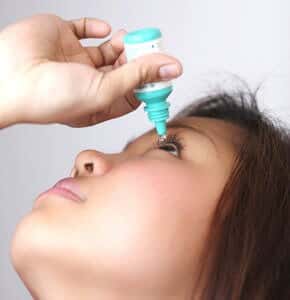
Autoimmune diseases can be difficult to treat. In these conditions, the immune system that normally protects the body from invading pathogens gets disoriented and starts to attack bodily tissues. When the targets are tear ducts and salivary glands, the result is the symptoms of Sjogren’s syndrome. (It’s pronounced SHOW-grenz.) Treatments are often directed at these symptoms, primarily dry eyes and dry mouth. Sometimes people with Sjogren’s are treated with systemic medicines such as hydroxychloroquine (Plaquenil) or methotrexate (Rheumatrex, Trexall) to calm the immune system.
Looking for Treatments to Ease Symptoms of Sjogren’s Syndrome:
Q. My wife has Sjogren’s syndrome and some other autoimmune problems. She is currently taking Plaquenil, which worries us because it can cause serious vision problems.
I found a reference to using low-dose naltrexone as an alternative treatment with few side effects. Can you comment on the efficacy of this drug for autoimmune problems? I didn’t find any solid studies, just anecdotal information.
What Is Naltrexone?
A. Naltrexone is an oral form of the opioid antagonist naloxone. At the standard 50 mg dose, it is approved for treating alcoholism and other substance abuse disorders.
Off-label, low-dose naltrexone (1 to 4.5 mg) is being considered for use against chronic pain (Bostick et al, Senior Care Pharmacist, Jan 1, 2019), fibromyalgia (Metyas et al, Current Rheumatology Reviews, 2018) and certain autoimmune conditions (Li et al, International Immunopharmacology, Aug. 2018). It may work in part by binding to opioid receptors on immune system cells.
No Studies on Naltrexone for Symptoms of Sjogren’s:
We haven’t found any studies of low-dose naltrexone for symptoms of Sjogren’s syndrome, which causes dry mouth, dry eyes and complications affecting other organs. Researchers need to conduct well-controlled trials to determine if this drug would be helpful.
In the meantime, you and your wife should discuss your concerns with your wife’s doctor. There might be ways to mitigate the risk of side effects from Plaquenil. The doctor may also be willing to supervise a trial of low-dose naltrexone, since there appear to be few adverse effects.
Learn More:
We have written about using low-dose naltrexone for pain and naltrexone at regular doses to treat alcohol abuse disorder.
Citations
- Bostick et al, "The use of low-dose naltrexone for chronic pain." Senior Care Pharmacist, Jan. 1, 2019. DOI: 10.4140/TCP.n.2019.43
- Metyas et al, "Low dose naltrexone in the treatment of fibromyalgia." Current Rheumatology Reviews, 2018. DOI: 10.2174/1573397113666170321120329
- li et al, "Low-dose naltrexone (LDN): A promising treatment in immune-related diseases and cancer therapy." International Immunopharmacology, Aug. 2018. DOI: 10.1016/j.intimp.2018.05.020

